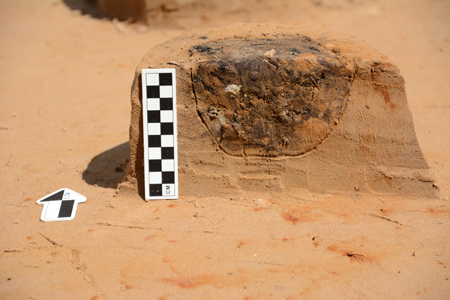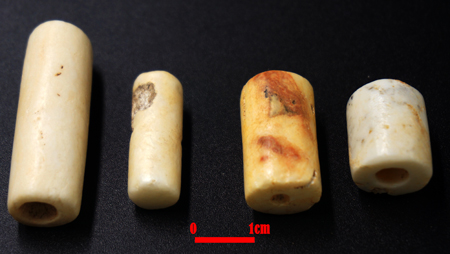New discovery at Gezishan Site, Ningxia Province
From:Chinese Archaeology NetWriter:Date:2017-04-14
Gezishan Site is located at the northwest of Qingtongxia city, Ningxia Province, it is an important prehistorical site in the later period of late Pleistocene in China. From 2013, the Ningxia Provincial Institute of Archaeology and Cultural Relics in conjunction with Institute of Vertebrate Paleontology and Paleoanthropology, Chinese Academy of Sciences made a systematical research, and cleared up the selected location No.10. In 2016, another great finding was made in the excavation.
The fire-using remain found in Gezishan Site
Excavation and Research Plan
Location No.10 was at the east of the Gezishan Basin. From 2014 to 2015, the archaeological team had felt out the distribution of the connate deposit of the site in the current situation, also had ascertained the actuality of the core area of the cultural layer. In 2016, archaeologists decided to expand the excavation scale in the core area, in order to get the overall connotation of the site.
In 2016, the archaeological team decided to clear up 200 excavation units (whose length of side was 1 meter) at the north of the core zone of the site, with an area of about 180 square meters. Expect the upper layer (disruption layer) was excavated as a thickness of about 20 to 30 centimeters layer, the rest was excavated as a thickness of about 5 to 10 centimeters.
Stratum, Age, artifacts and Remains
The stratum was divided into 5 layers, and archaeologists have recorded the three-dimensional coordinates of about 7000 stone tools (larger than 2 centimeters) and more than 500 pieces of animal fossils; Dozens of ostrich eggshell beads was found, especially those of less than 2 millimeters diameter, which became an important achievement of this excavation, however, the manufacturing techniques and the usage method, indicating the skills and cognitive competence need to be further researched. Meanwhile, about 400 pieces of charcoal samples was collected from different layers, in order to establish a high-resolution chronology frame and a solid background for the culture understanding. More than 20 remains of fire-using and carbon dust dense area were revealed, a large amount of burnt stones scattered in the excavation, and some of which were fireplaces with burnt bones around. In the fourth layer of excavation unit T5, dozens of round pits, with about 10-20 centimeters in diameter, 5-20 centimeters in depth were found, in zonal distribution, which was speculated to be temporary dwelling remains.

The section which showed the uncertain post hole
Academic values and Significance
The excavation of Gezishan Site was the first time that chronosequence from the late period of late Pleistocene to the early period of holocene was established at the edge of the northwestern desert in China, providing important materials for understanding the prehistoric human activities and environmental change in this special geographic zone. Given to the excavation, archaeologists firstly found the stone saddle-quern, stone roller, featured bi-facial tools and Helan pointed implements in situ, which defining the date of those artifacts , and providing evidence of the means of livelihood and recipes of ancient human beings at that moment in this area.

The ostrich eggshell beads

The pierced calcite ornaments
For so long, rare site of complete stratigraphic sequence was found in this area, however, in location No.10 of Gezishan site, the cultural accumulations of at least 3 different periods not only enriched the period features and cultural connotation, but made it a special location of discussing the evolution from the late period of late Pleistocene to the early period of Holocene, various cultural features of different areas in the transition period from the Paleolithic to the Neolithic, cultural evolution and prehistoric human activities of the desert fringe zone. (Translator: Wang Jue)

